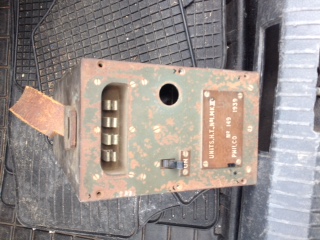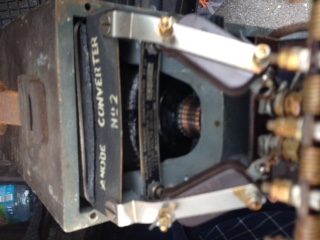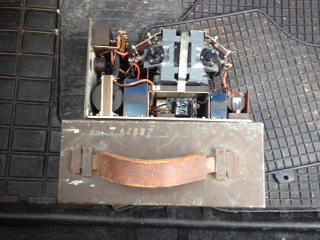Posts: 4
Threads: 1
Joined: Dec 2015
City: Ireland

Hi folks,
First timer so please forgive me if I've posted incorrectly.
I purchased a "Philco Anode Converter No.2" (just because it was old and I can't resist), but I have hit a wall with trying to find out what it's for or what it does. Maybe someone here would be able to help.
I look forward to any help you guys maybe able to offer and I thank you in advance.
Posts: 5,220
Threads: 275
Joined: Nov 2012
City: Wilsonville
State, Province, Country: OR
Welcome to the Phorum!

I see you were able to post and add a pic. Unfortunately I haven't a clue as to what it is but others may.
Posts: 201
Threads: 26
Joined: Dec 2005
City: Morris Plains, NJ
My first guess is that it might be for electroplating; whatever it is, its a very high current device.
Pete AI2V
Posts: 4
Threads: 1
Joined: Dec 2015
City: Ireland


A couple more pics that might help. Thanks guys
Posts: 7,305
Threads: 270
Joined: Dec 2009
City: Roslyn Pa
Hmmmm portable!
I see an armature( perhaps a dynomotor) it may be a hv or anode supply as they say in GB.
Terry
Posts: 5,220
Threads: 275
Joined: Nov 2012
City: Wilsonville
State, Province, Country: OR
Its the missing part from the the original Turbo Encabulator lost for all these years and now found.
[Video:
https://www.youtube.com/watch?v=Ac7G7xOG2Ag]
Posts: 4
Threads: 1
Joined: Dec 2015
City: Ireland
Posts: 2,128
Threads: 18
Joined: Oct 2008
City: Merrick, Long Island, NY
I guess I would have to ask what's the goesina and what the goesoutta might be. B+ from storage batteries might be, if it's old war surplus, could be almost anything terrestrial or airborne. I know this helps a lot.
Posts: 5,220
Threads: 275
Joined: Nov 2012
City: Wilsonville
State, Province, Country: OR
Well ciaran, you've stumped the phorum I think! That doesn't happen often.
Posts: 4,950
Threads: 54
Joined: Sep 2008
City: Sandwick, BC, CA
I think that Terry figured out what it is, it's a B+ or anode supply with a dynamotor, probably for military electronic equipment, such as a radio, in a tank or maybe a "portable" base station. It does roughly what a vibrator type power supply does in a car radio, except it produces more voltage and more current, 6 volts goes in from a storage battery, and several hundred volts come out. I see that near the commutator there is a brass plate with some other information on it, that may answer some questions.
Regards
Arran
Posts: 4
Threads: 1
Joined: Dec 2015
City: Ireland
Thanks guys. As soon as I get a chance I'll post more detailed pictures. It wasn't my intention to confuse and I'm sorry for that but I knew if you guys couldn't figure it out nobody could. So again I thank you all



![[-] [-]](https://philcoradio.com/phorum/images/bootbb/collapse.png)


